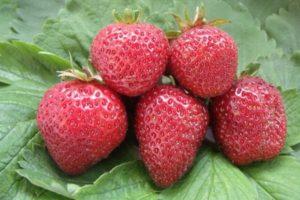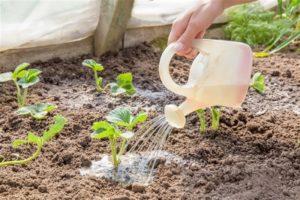Description and characteristics of Borovitskaya strawberries, cultivation and reproduction
The aromatic and unique taste of Borovitskaya strawberries, as well as its unpretentiousness, frost resistance, dessert taste, aroused particular interest among gardeners. A healthy berry grown in the garden will allow you not only to enjoy the fresh harvest in the middle of summer, but also to have a bit of winter tea with strawberry jam and jam.
Strawberry characteristics
The Borovitskaya strawberry variety was obtained by crossing the Redgontlet and Nadezhda varieties. The latest crop among both domestic and foreign varieties. In the Moscow region, this berry can be enjoyed in July, in the southern regions, the harvest ripens earlier - in the last decade of June.
The variety is not intended for commercial cultivation, but is suitable for country gardens, private farms.
Description of the variety
The plant forms erect, spreading shrubs of medium size with well-leafy shoots. The large-sized culture is decorated with wrinkled leaves, painted in a dark green color. Due to the compactness of the bush, large inflorescences do not lie on the ground, but are located above the leaves. Bisexual flowers, which do not require pollinators, attract attention.
The Borovitskaya strawberry variety is valued for the size of the fruits, the average weight of which is 40 grams.
Berries have a regular conical shape, often doubled with a groove in the middle, without a neck. The color is deep red with an orange tint; at full maturity, the fruits become cherry red. The pulp is light red in color, characterized by density and has no voids. Strawberries have a pleasant sweet taste with a sourness and fruity finish. The tasters rated the variety at 4 points.
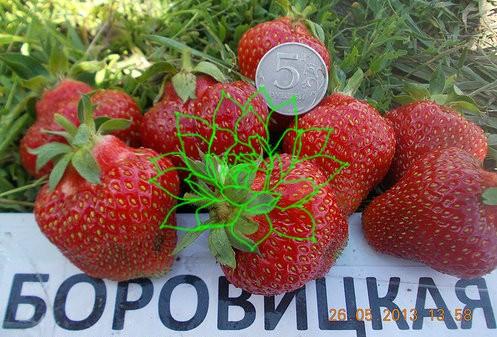
Positive and negative sides of garden strawberries
The advantages of the Borovitskaya strawberry variety, thanks to which it deserves its place in the garden:
- good taste and attractive appearance of strawberries;
- stable yield, each bush is capable of producing 0.5 kg of fruit;
- late ripening, which prolongs the strawberry season and allows you to feast on fresh berries in the middle of summer;
- immunity to major diseases of fungal and infectious origin;
- the ability to withstand different climatic conditions and adapt to sharp fluctuations in ambient temperature;
- frost resistance, tolerates a decrease in temperature indicators to -35 degrees;
- late flowering, which reduces the risk of damage to flowers by spring frosts;
- versatility in use, fruits can be eaten fresh, frozen and used for winter harvesting.
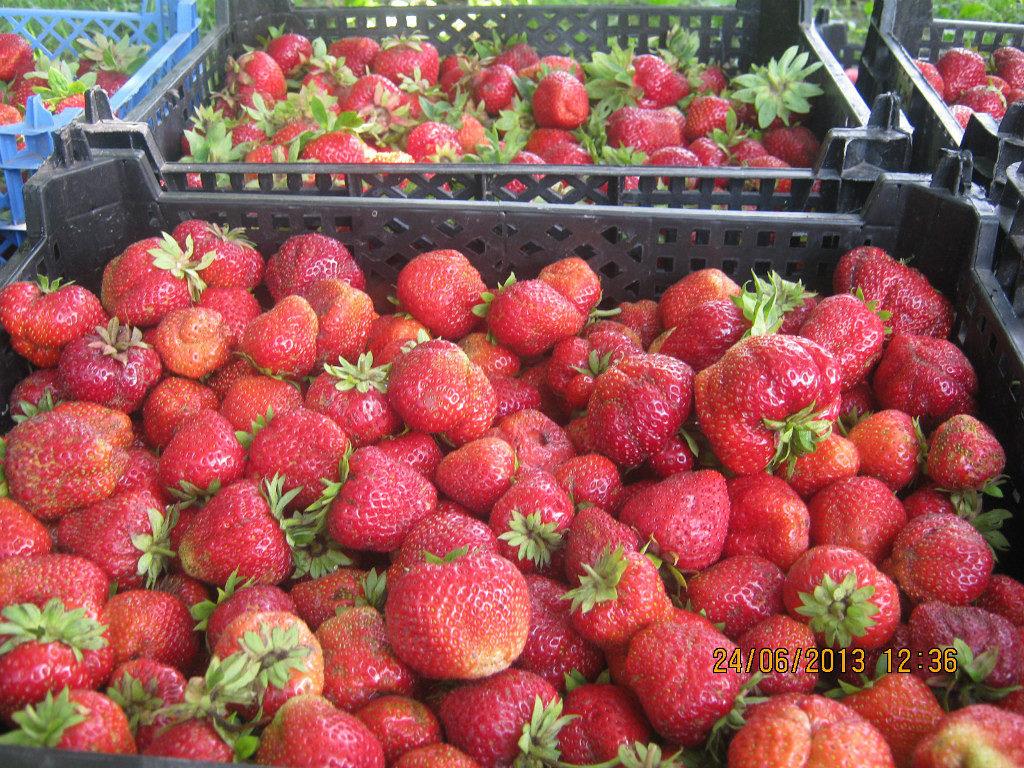
When choosing the Borovitskaya strawberry variety, it is worth considering that it also has disadvantages:
- unsuitable for growing for industrial purposes due to low yield rates;
- unstable fruiting, fruit size and weight decrease by the end of the season;
- ripe berries cannot be transported, as they become soft, juicy;
- poor resistance to gray mold.
Nuances of growing strawberries Borovitskaya
To get a good harvest, you must follow all agrotechnical advice on growing, taking into account the varietal characteristics of Borovitskaya strawberries. It is important to create optimal conditions for active germination, flowering and ripening of delicious berries.
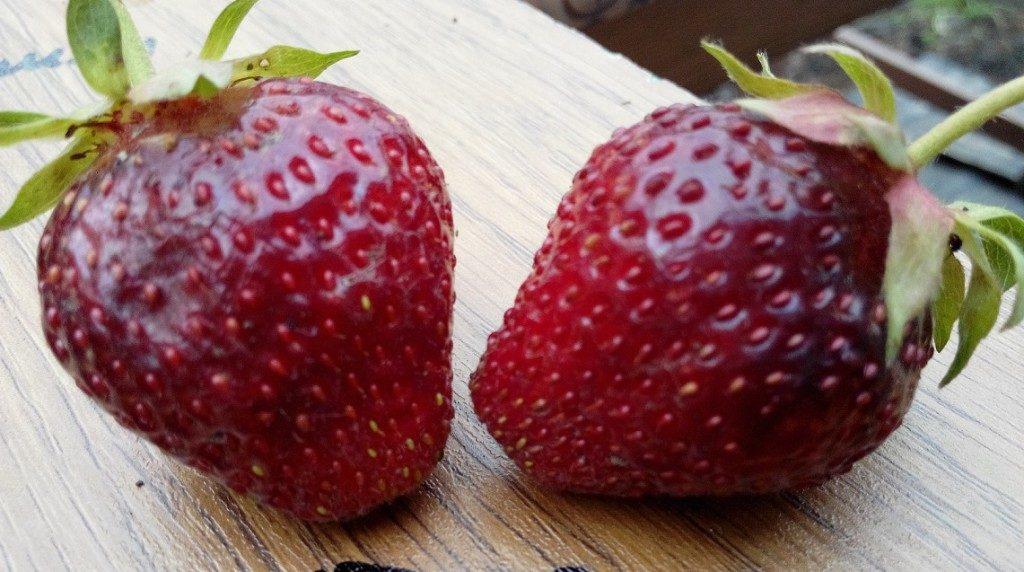
How to choose the right planting material
The amount of harvest depends on the quality of the planting material. Seedlings of the Borovitskaya strawberry variety should have a root collar more than 6 mm in diameter, 4-5 leaves, a whole apical bud and white roots 3-5 cm long.
Before planting, send the seedlings to a room with a cool temperature for 2 days. This increases the resistance to external factors. It is recommended to cut the roots a little to speed up rooting and to treat them with growth stimulants.
Choice of time and place
Borovitskaya strawberries can be planted both in spring and autumn. It is better to plant seedlings at the end of summer or in the first decade of September.
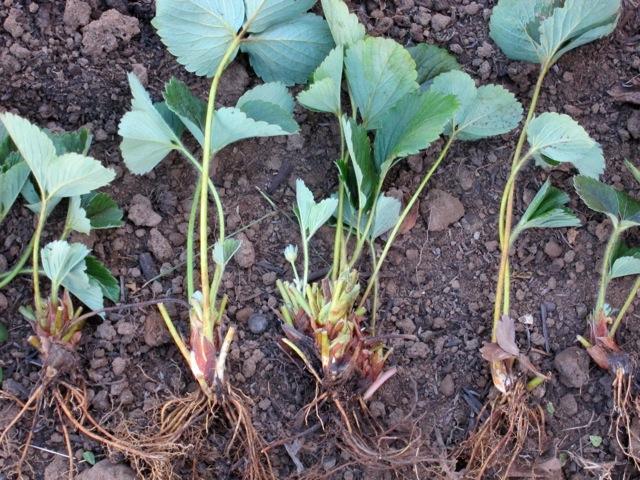
High yields will be observed in the beds located in a sunlit place protected from cold winds. The berry culture will take root on moisture-intensive soils, black soil, loam. Groundwater should not be closer than 80 cm.
Before planting the Borovitskaya strawberry variety, all weeds on the site should be destroyed.
Then enrich the soil with organic matter and dig up. You need to prepare a site for spring planting in the fall. When planting seedlings in autumn or summer, the required work should be done a month before the event, so that the soil has time to sink, otherwise the roots of the plants will be exposed.
Stages of the planting process
The correct planting of strawberries of the Borovitskaya variety is a guarantee of the successful development and favorable existence of the plant bushes, therefore, the following procedure must be followed:
- Dig holes, the distance between the lines should be 30-35 cm, and the ribbons should be 65-70 cm.
- Pour warm water into the prepared pits and place the seedlings, straighten the roots, sprinkle with soil. Make sure that the root collar, on which the growth point is located, is above ground level.
- Water abundantly and mulch around the bushes with organic matter to preserve nutrients and moisture.
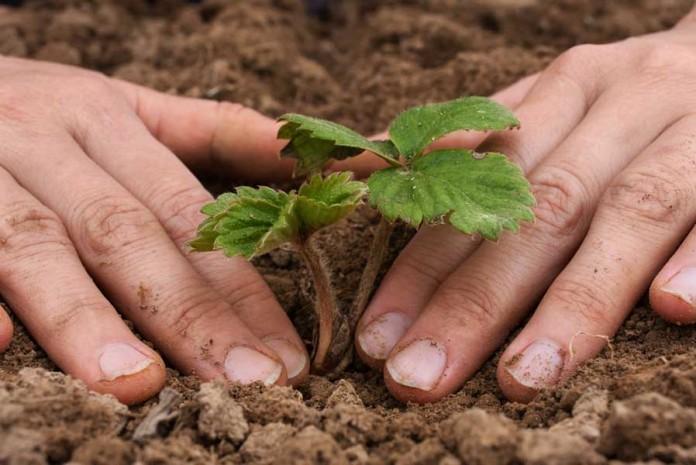
Planting in cloudy and damp weather. If it is very hot, it is better to shade the planted plants for 5-7 days from the scorching sun by applying green branches or burlap.
Basic rules for plant care
The health of strawberry bushes, their growth, development and fruiting depend on the efforts spent by the gardener on important agricultural practices. Timely care will increase productivity indicators, give a beautiful appearance to the garden, and prevent the development of diseases.
Universal fertilizer
Borovitskaya strawberries need high-quality mineral and organic nutrition. In addition to feeding at the planting stage, it is necessary to fertilize the plant at least 3 more times per season:
- In early spring, after the snow melts and the soil warms up, inorganic ammonia-based fertilizers should be applied.
- When flowering, pay special attention to foliar feeding and fertilize the plant with a complex consisting of elements such as nitrogen, potassium, phosphorus and calcium. Spraying is repeated during the ovary period.
- After harvesting, equip the soil with minerals and add humus to restore strength and stimulate the development of the plant in the coming season.
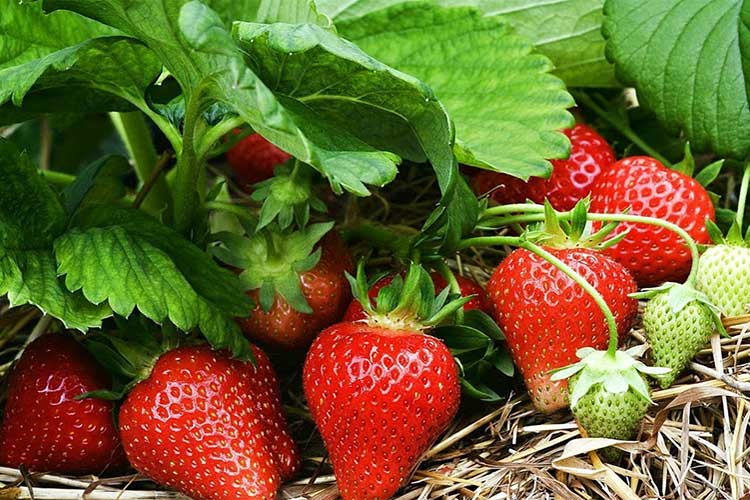
Watering rules
Strawberry variety Borovitskaya firmly tolerates dry weather, but the bushes need to be watered regularly and abundantly, especially during flowering. Watering is carried out strictly at the root, avoiding moisture ingress on the vegetative and generative organs of the plant, since there is a likelihood of gray rot.
Weeding and loosening
Strawberry beds need 6-8 weeding per season. The culture painfully perceives the seizure of its territory by weeds. It is important to exclude the procedure at the time of flowering, so as not to shake off the pollen from the flowers.
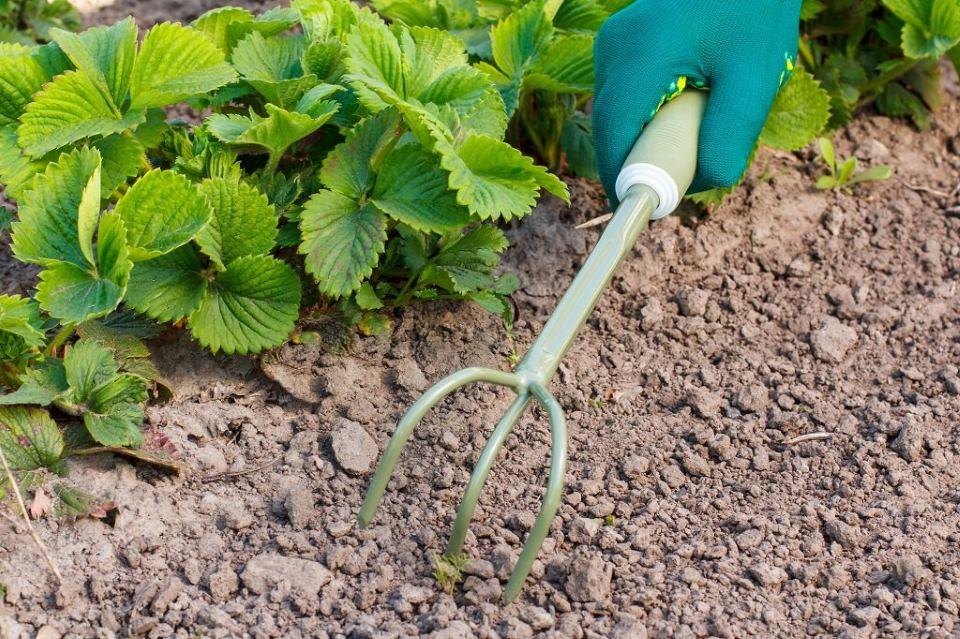
Loosening is also necessary for strawberries of the Borovitskaya variety, since it activates biological processes and contributes to the flow of the necessary amount of air into the soil required for the growth and nutrition of the roots.
Mulching strawberries
During the entire growing season, you need to mulch the soil around the bushes of the Borovitskaya strawberry variety with straw, sawdust or film. This will help retain moisture in the soil, stop the spread of weeds, and protect the root system from freezing.
Treatment against diseases and pests
According to the description, the Borovitskaya strawberry shows resistance to diseases inherent in the culture, but this factor does not exclude the risk of infection.
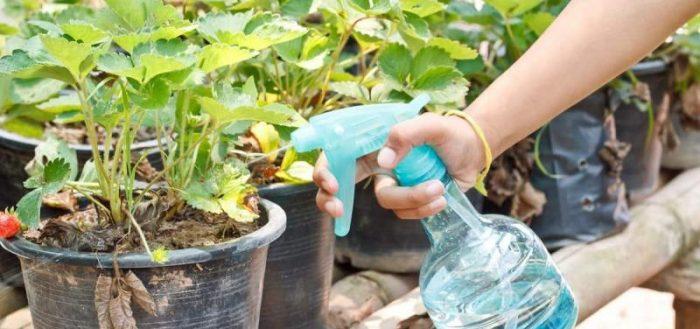
Common diseases:
- Gray rot. You can diagnose this problem by brown spots with a gray coating on foliage and fruits. Treatment involves the removal and subsequent destruction of all damaged parts of the plant. To fight the fungus, spray the bushes with a solution of potassium or iodine permanganate.
- Powdery mildew. The disease is manifested by a white bloom on the leaves, which later acquires a bronze color. Severe infestation requires plant treatment with fungicides.
Of the pests dangerous for the Borovitskaya strawberry variety, the nematode, the strawberry mite are considered. They ruthlessly destroy plants, feed on roots, leaves, and some of them prefer to feast on fruits, in addition, they are carriers of dangerous diseases. To fight such parasites by treating the bush with the use of insecticidal and acaricidal preparations.
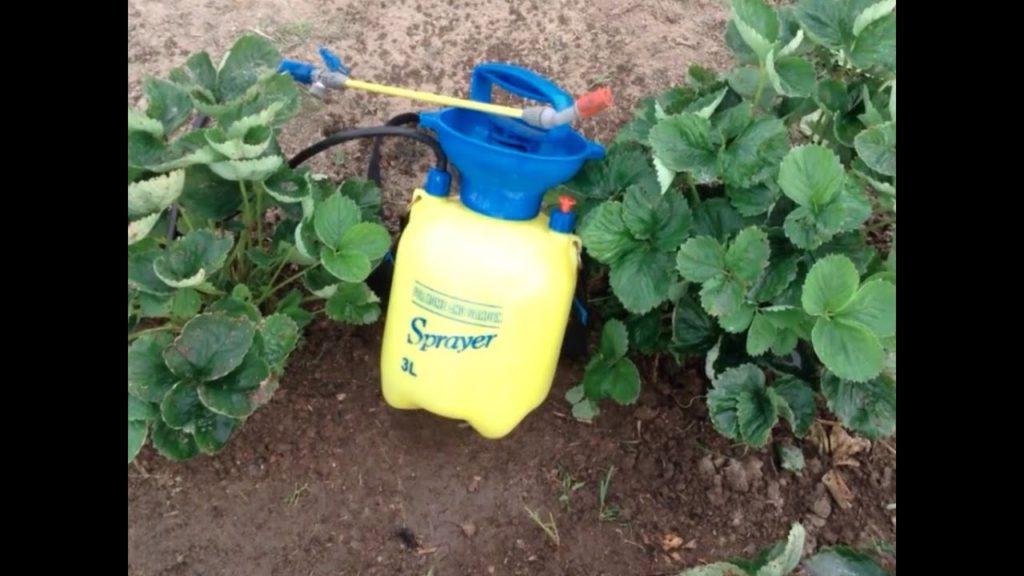
When using chemicals, it is necessary to observe the consumption rates prescribed in the instructions and the timing of the last processing before harvesting.
Reproduction of culture
The Borovitskaya strawberry variety multiplies with ease and without financial costs. The culture gives many tendrils, which tend to take root and create numerous rosettes. If the main goal of growing is reproduction, then it is recommended to remove the peduncles and sacrifice the yield for abundant and rapid growth of the mustache.
In other cases, the stolons must be removed, since their development can negatively affect both the number and size of the berries.
Collection and storage of strawberries Borovitskaya
The fruits of the Borovitskaya strawberry variety intended for storage must be collected, leaving the tails and without removing the cap. Collect in the morning, after the morning dew dries, or before sunset. Put the harvested crop in boxes, having previously covered them with paper or cloth, and cool to 0 degrees. So the fruits will lie in a cold place for 2-3 days. Ripe berries at room temperature will stay fresh for only 24 hours.
Among the variety of strawberry varieties, Borovitskaya deserves special attention due to a number of positive characteristics. It will not be difficult to grow and breed it in the garden. The main thing is to follow all cultivation techniques and recommendations for care. And then the harvest will delight those who like to enjoy natural products with an amazing taste.
